TORONTO (Dec. 29) — Call Edward Rogers anything you wish (and the off–color names will surely intensify, next summer, when he assumes controlling interest in the Toronto Maple Leafs). Just do not call him stupid.
Not yet, anyway.
Rogers would never admit that he ordered a sweeping renovation of the ball park that bears his family name largely to distract baseball fans from the disastrous product on the field, assembled by co–stars Mark Shapiro and Ross Atkins. Given the hordes that showed up to watch a terrible club throughout last season, we can argue to the contrary. It was a brilliant maneuver by the recluse that owns all of professional sport (save the Argos) here in Toronto. For the sake of the Blue Jays, the concrete convertible had best continue as a local attraction. God only knows how pathetically the baseball situation will evolve in the next calendar year. It could get ugly. Real ugly.
A few weeks ago, Kevyn Adams, beleaguered general manager of the Buffalo Sabres, claimed, rather bluntly, that his city was “not a destination” for free–agent athletes. Which might be different were the Sabres not among the worst teams in recent National Hockey League history. The club could be located in Times Square and fail to lure big names given a playoff drought dating to 2011. Fourteen years is a lonnnnng time to be absent from the Stanley Cup chase. Nearly a full generation long. I wouldn’t blame that on the city of Buffalo. Neither will I castigate my home town if Vladimir Guerrero Jr. and Bo Bichette say too–da–loo after the next baseball season. The Blue Jays will own that duo–decision by themselves, irrespective of location and fan base. If the two faces of the franchise flee Toronto at first opportunity, our city will no–longer be a “destination” for free agent players. As it once was for such baseball stars as Dave Winfield, Jack Morris, Dave Stewart, Paul Molitor… and, to be fair, George Springer, Chris Bassitt and Kevin Gausman, obtained by the Shapiro–Atkins administration. Another dismal season will surely prompt Guerrero and Bichette to explore free agency next winter. And, then what for the Blue Jays?
Why, it’s enough to make a local baseball zealot shudder.

The Blue Jays claim, without much corroboration, that they were finalists in the bidding for superstar free agents Shohei Ohtani (Los Angeles Angels to Dodgers) and Juan Soto (New York Yankees to Mets). Did you notice the aforementioned cities? Tinseltown and the Big Apple are incomparable destinations in Major League Baseball. So said the most–recent World Series between the Dodgers and Yankees. And, countless years of classic playoff confrontation. In the end, each player used Toronto (and other suitors) as a bargaining chip for staying in the same city. There was no strategic purpose to join a second–level team. Boston, Chicago and San Francisco also have rich baseball appeal (and eight World Series championships since Toronto’s last appearance, in 1993).
So, the questions remain: How long can the rejuvinated Rogers Centre carry the franchise when notable players are shunning the Blue Jays? And, how might the situation reverse itself? The latter query is somewhat rhetorical… and decidedly, it would seem, beyond the grasp of Shapiro and Atkins. It requires putting words into action and providing loyal fans a competitive, playoff–worthy product. With some future to call upon. Not taking wild swings at people that couldn’t locate our city on a North American map. At a time when player development is threadbare.
We also wonder how important the Blue Jays will “feel” to Ed Rogers once he gains 75% control of the Leafs?
A lot — probably too much — depends on Guerrero Jr. and Bichette. Gifted players that (alike their hockey counterparts here in town) haven’t yet crafted a playoff résumé. The promise generated by that duo allowed Shapiro and Atkins to acquire top–level free agents Springer, Bassitt and Gausman. But, it hasn’t been fulfilled. Even with Guerrero Jr. as the best player in baseball over the final–third of last season, the Blue Jays finished in the basement of the American League East for the first time since 2013. There are many days before spring training, but the big acquisitions so far this off–season are (from Cleveland) second–baseman Andrés Giménez and pitcher Nick Sandlin. If you’re saying “who?” you aren’t alone. Nothing about the Shapiro–Atkins administration provides tangible hope for Blue Jays fans. Just anxiety over the likelihood of the club’s top two attractions fleeing.
That Edward Rogers refuses to make a change likely results from his affinity for Shapiro (who did spearhead an impressive renovation). And, Shapiro’s reported threat that he would resign if Rogers fired his protégé, Atkins.
Neither justification will resonate for long here in Toronto.
“Next Level” could soon become “Next Departure.”
HOCKEY BOOKS OF YESTERYEAR
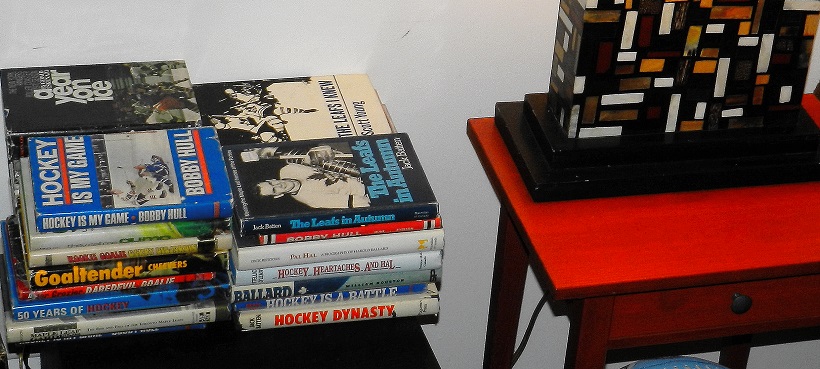
These books have not only been read multiple times, but schlepped, through the decades, to eight different living locations. The covers aren’t all in great condition. The subjects are those that young people, today, may not know of. So, too, the authors. In my youth, however, Stan Fischler, Scott Young, Jack Batten and Brian McFarlane were literary demigods. And, all material written about the Toronto Maple Leafs somehow made its way into my possession (not everything changes with time). These are cloth (or hard–cover) items in my collection. Any hockey fan of vintage will have at least one of these on a bookshelf… or tucked away somewhere safe:
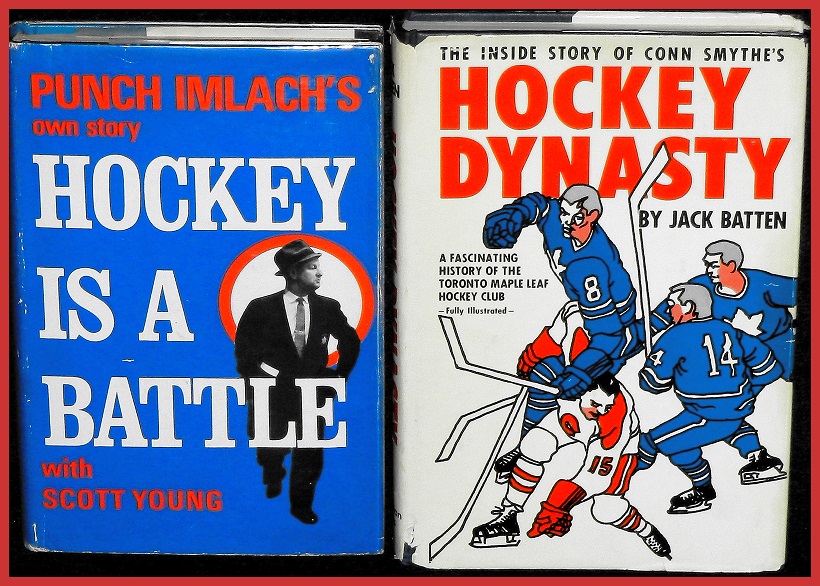
HOCKEY IS A BATTLE — George Imlach and Ascot Productions, 1969. / HOCKEY DYNASTY — Pagurian Press Ltd., 1969. The first books I read about the Maple Leafs.
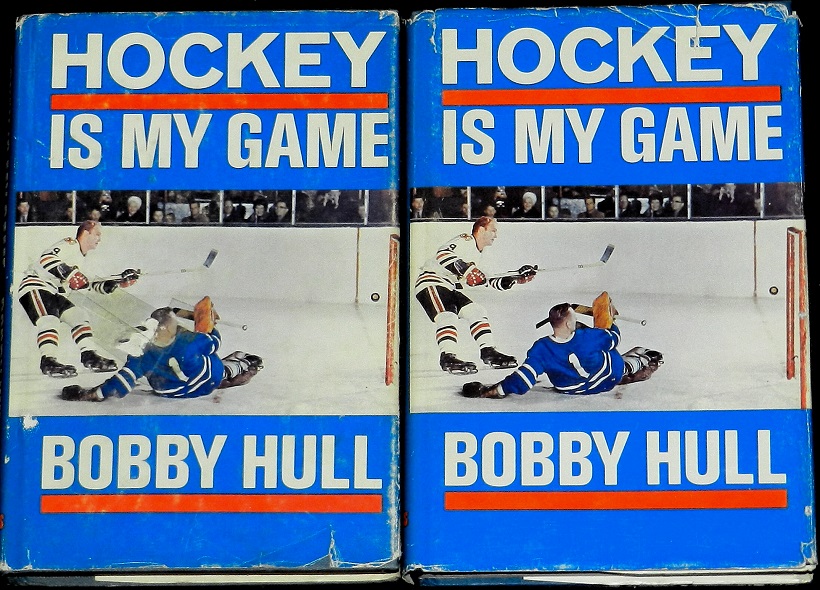
HOCKEY IS MY GAME — Bobby Hull and Longmans Canada, 1967. Oh, how popular I’d have been in my Grade 3 class with even one copy of this book, let alone the two I still own. During the 1967–68 school year, this book was repeatedly signed out of the library, with dozens on a waiting list. I’ll never forget it. Hull, the superstar of the Chicago Black Hawks, was the most–popular and recognizable hockey player in the world.
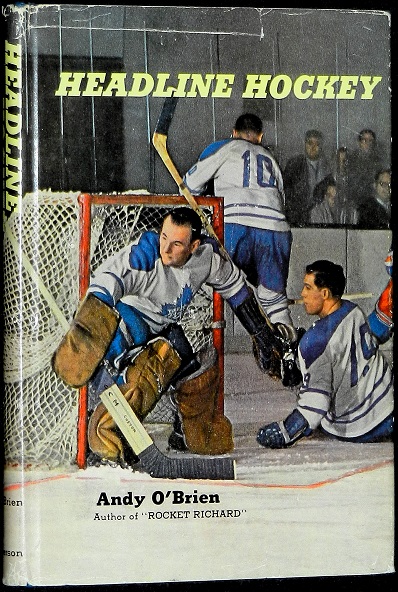
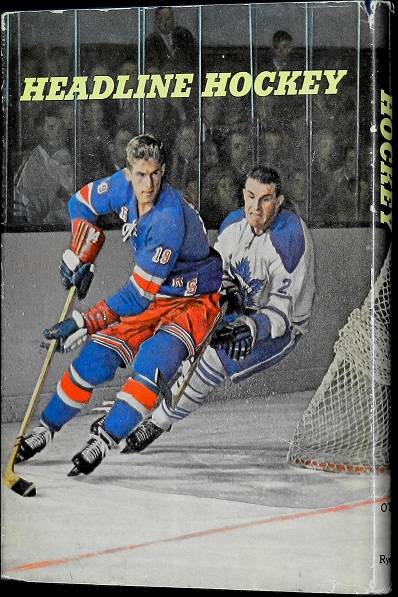
HEADLINE HOCKEY — The Ryerson Press, Toronto, 1963. Montreal author Andy O’Brien, editor of the former Weekend Magazine, wrote about Canada’s national game. The formative, early years of the sport at the turn of the 20th century. Another excellent read.
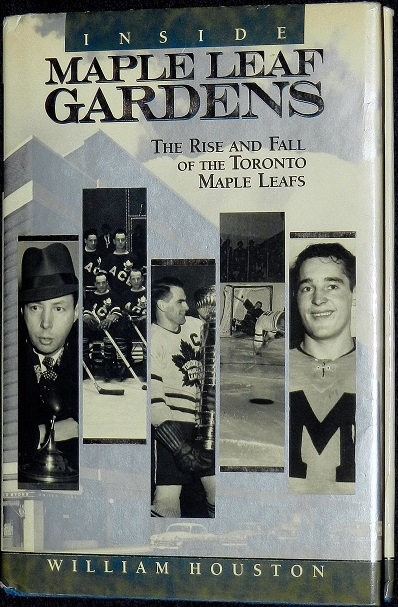
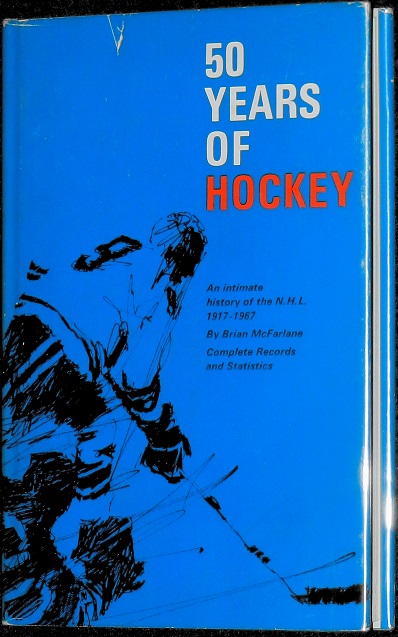
INSIDE MAPLE LEAF GARDENS — McGraw–Hill Ryerson, 1989. This is still, in my view, the best book ever written about the Toronto Maple Leafs. Bill Houston, the old Globe and Mail scribbler, missed nothing in his disection of the hockey club and its famous arena. Find a copy on Amazon or eBay and grab it. 50 YEARS OF HOCKEY — Pagurian Press Ltd., 1967. Brian McFarlane was a regular alongside Bill Hewitt on telecasts of Maple Leafs games when he produced this history of the NHL in the expansion season of 1967–68. McFarlane followed with 60 YEARS OF HOCKEY in 1977 and 100 YEARS OF HOCKEY in 2017.
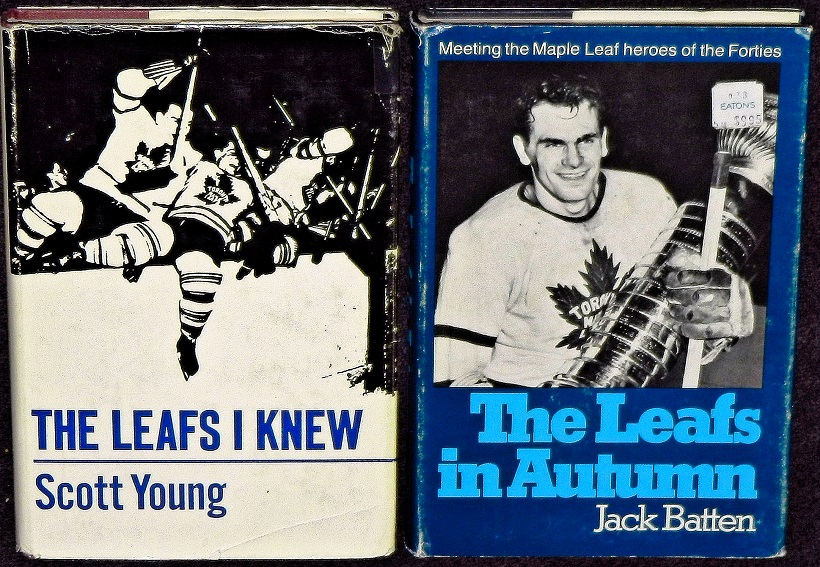
THE LEAFS I KNEW — Scott Young and Ascott Productions, 1966. A history of the Leafs from 1958–59 (when Punch Imlach took over as GM and coach) through 1962–63, the second of three consecutive Stanley Cup triumphs under Imlach. Scott Young, also known as the late father of Canadian musician Neil Young, covered the championship Leafs for the old Toronto Telegram. THE LEAFS IN AUTUMN — The MacMillan Company of Canada, 1975. Notice the Eaton’s price tag in the upper–right corner. I’ll never forget Mom and Dad purchasing this book while I was in hospital with my first bout of Crohn’s (in early 1976). Jack Batten, another career–long chronicler of the Leafs, wrote about his heroes. Among them, Howie Meeker, Sid Smith, Syl Apps, Bill Ezinicki, Hap Day and Teeder Kennedy.
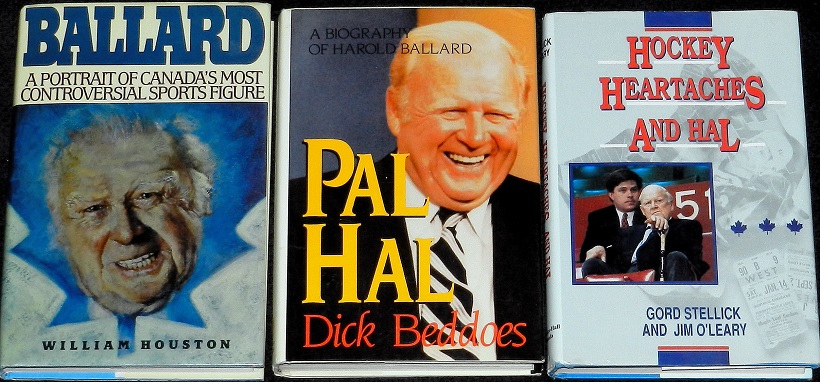
BALLARD — William Houston and The Summerhill Press, 1984. Prior to writing INSIDE MAPLE LEAF GARDENS, Bill Houston produced his first gem: a no–holds–barred look at the controversial Maple Leafs owner, with whom he repeatedly quareled. PAL HAL — Dick Beddoes and MacMillan of Canada, 1989. Few media personalities were as close to Ballard as the flamboyant former columnist at the Globe and Mail. Beddoes referred to the book as “written by his great and irreverent friend.” HOCKEY HEARTACHES AND HAL — Prentice–Hall Canada, 1990. Poor Gord Stellick (with whom I later worked at The FAN–590) had to withstand the demented Leafs owner in the final years of his life, when Ballard and his partner, Yolanda MacMillan, became the figurative Bonny & Clyde of Maple Leaf Gardens.
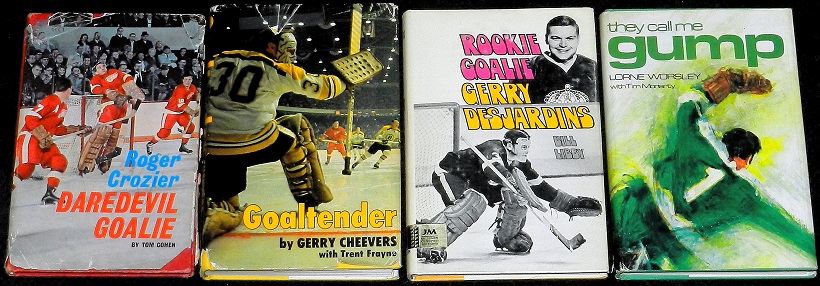
DAREDEVIL GOALIE — Rutledge Books Inc., 1967. The first hockey book I ever read. Sometime in 1968. About Roger Crozier, the acrobatic (and chronically ill) goalie of the Detroit Red Wings. GOALTENDER — Dodd, Mead & Company, New York, 1971. There is lots of blueish “jock talk” in this diary of the remarkable 1970–71 season with the Boston Bruins. Gerry Cheevers did not design this work for youthful eyes. The Bruins, with Bobby Orr and Phil Esposito, rewrote the regular–season record book in countless categories only to fall, shockingly, to Montreal (and rookie netminder Ken Dryden) in the first playoff round. ROOKIE GOALIE GERRY DESJARDINS — Julian Messner, New York, 1970. Bill Libby, who covered the west as a correspondent for The Hockey News, wrote about the Los Angeles Kings goalie who showed so much promise in 1968–69, his freshman season in the NHL. THEY CALL ME GUMP — Dodd, Mead & Company, New York, 1975. The popular and cherubic goalie, who helped Montreal to four Stanley Cup titles between 1965 and 1969, recounts his wondrous career… and his debilitating fear of flying. Which Lorne Worsley somehow overcame to spend his last five years with the Minnesota North Stars.
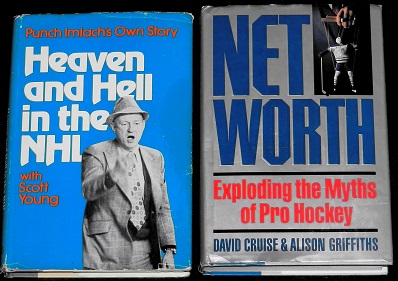
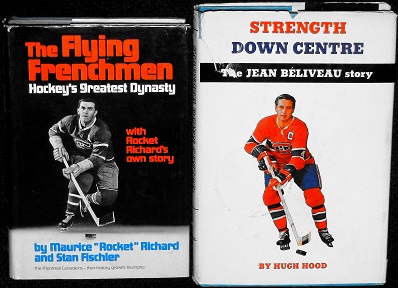
HEAVEN AND HELL IN THE NHL — McClelland and Stewart, Ltd., 1982. Scott Young had written HOCKEY IS A BATTLE with Punch Imlach. Just more than 13 years later, he ghosted Imlach’s second autiography about the legendary coach’s final, tumultuous years in the NHL with Buffalo and Toronto. NET WORTH — Penguin Books Ltd., 1991. As the subtitle suggested, David and Alison “exploded the myths” of hockey when dominated by such strong–arms as James Norris, Bill Wirtz, Alan Eagleson and others who ripped off the players for decades. Until such icons as Bobby Orr, Carl Brewer, Gordie Howe and Bobby Hull spoke up. This ranks among hockey’s all–time literary works. THE FLYING FRENCHMEN — Hawthorn Books Inc., 1971. Stan Fischler wrote about the dynastic Montreal Canadiens and coupled with the great Maurice Richard for the Rocket’s first of several biographies. STRENGTH DOWN CENTRE — Prentice–Hall of Canada, Ltd., 1970. Also the first of several biographies about Jean Beliveau. Montreal writer Hugh Hood combined with the Canadiens star captain and winner of 10 Stanley Cup titles (second only to teammate Henri Richard’s 11). Written prior to Beliveau’s final NHL season, 1970–71.
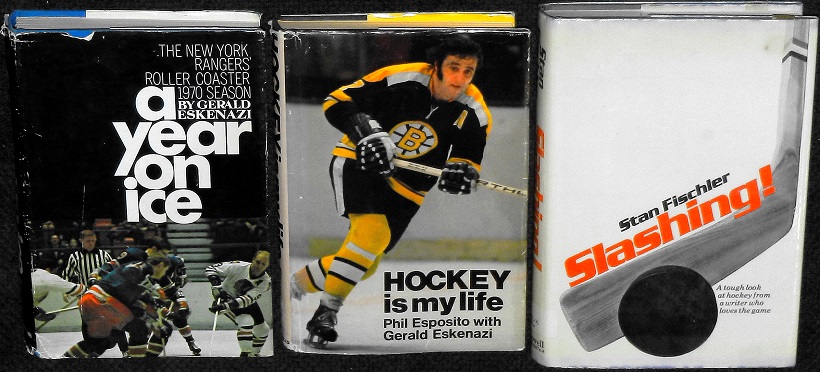
A YEAR ON ICE — Coward–McCann Inc., 1970. When I think of American hockey authors of the 1960’s and 70’s, the names Stan Fischler and Gerald Eskenazi immediately come to mind. The latter followed the Rangers for the New York Times through the 1969–70 season and a fight-filled quarterfinal playoff against the hated Boston Bruins. HOCKEY IS MY LIFE — Dodd, Mead & Company, New York, 1975. Eskenazi teamed with Boston superstar Phil Esposito for the first of several career works. Espo recounted his early NHL years in Chicago; his two Stanley Cups with the Bruins and his incomparable role as leader of Team Canada 1972 during the iconic, eight–game series against the Russians. SLASHING! — Thomas Y. Crowell Company, New York, 1974. I remember not being able to put down this book. Fischler, the prolific New York author, is now 92 and undeservedly not in the Hockey Hall of Fame. This was a candid look at the sport during the turbulent era of two professional leagues, the NHL and World Hockey Association.
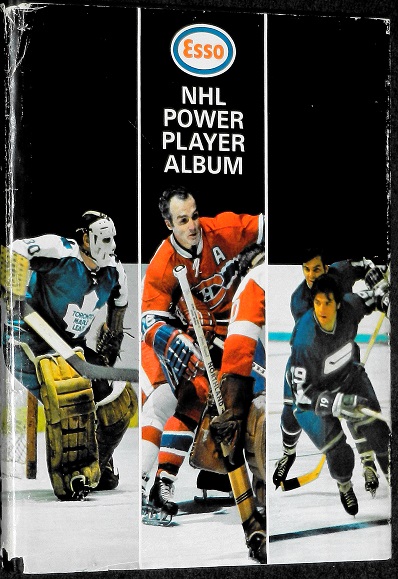
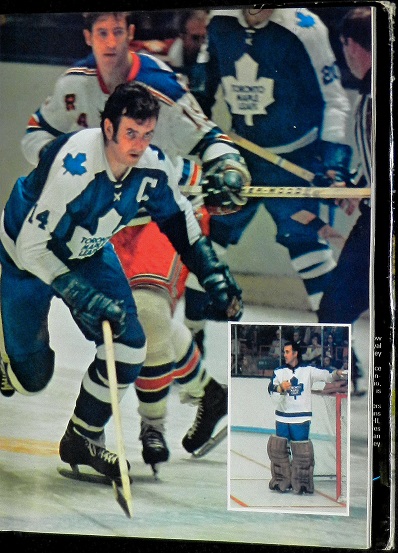
If you do not still have your NHL POWER PLAYER ALBUM from the 1970–71 season, you aren’t a true hockey fan. 😛 This colorful, coffee table–sized item was produced by Imperial Oil (Esso) as were the individual player stamps (below) of the 14 NHL teams. It was the first year of the Buffalo Sabres and Vancouver Canucks. The season the Leafs completely redesigned their logo and uniforms under Harold Ballard (as per the photo, top–right, of Dave Keon). The California Golden Seals and Minnesota North Stars were still around. The final season in Montreal and Detroit for all–time legends Jean Beliveau and Gordie Howe. The year rookie Ken Dryden led the Canadiens to a surprise Stanley Cup.
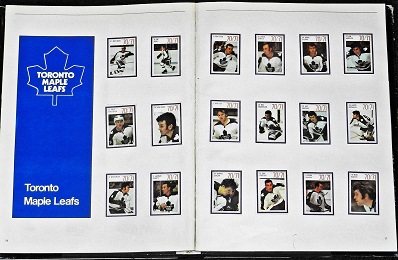
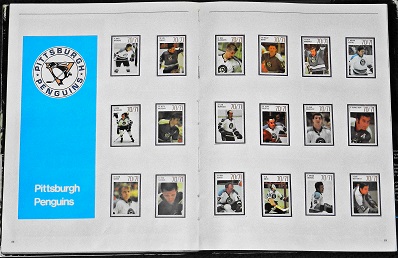
EMAIL: HOWARDLBERGER@GMAIL.COM

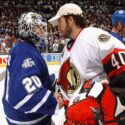

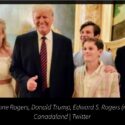
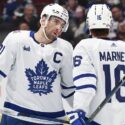
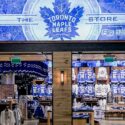

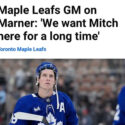


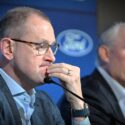
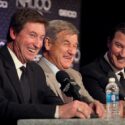
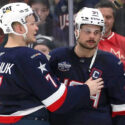

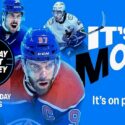
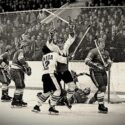

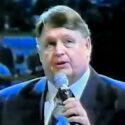
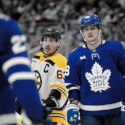
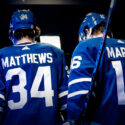
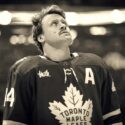
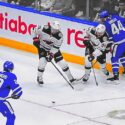
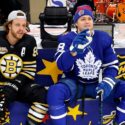
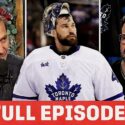

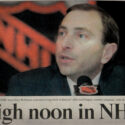

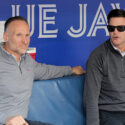
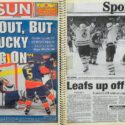

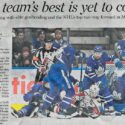

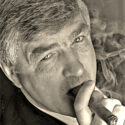
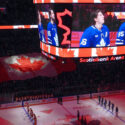

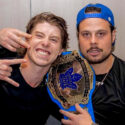
Howard, cleaning out our house. I have 9 issues of the Hockey News (1962-64) you can have for free if you’re interested.
Would never turn down THAT deal. Happy new year.
The blue jays are a prime example of, “If the seats are full (enough) ownership doesn’t care.” It’s a charge frequently levelled at the leafs, but is seemingly more appropriate for the jays.
I guess MLB’s league media contract combined with the gate and concession receipts satisfy all of Rogers expectations. They must make a fortune from beer sales alone because anytime I’ve been subjected to a post game Blue Jays crowd there has been a significant contingent who are falling down drunk, puking their guts out or mumbling menacingly at some poor sod. Same goes for TFC. Shapiro and his marionette shouldn’t have been hired in the first place and at the very least are well past their best-before-date.
It seems that the Blue Jays are an afterthought these days for the Telecom that owns the club with Hockey being priority 1 through 1000.